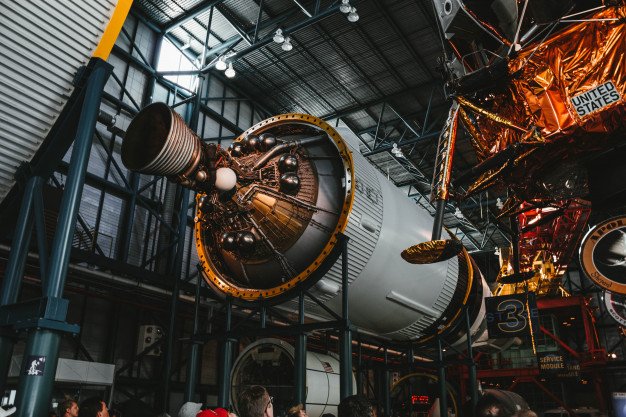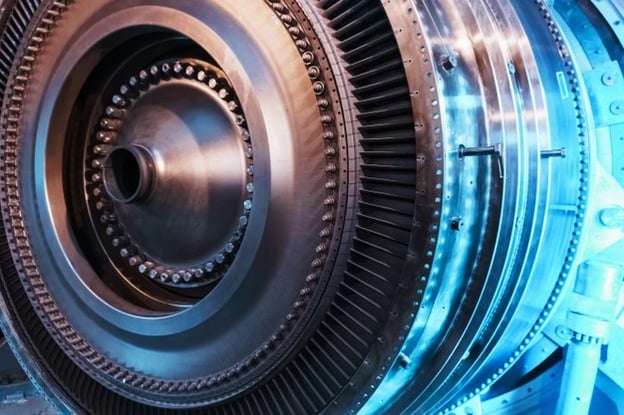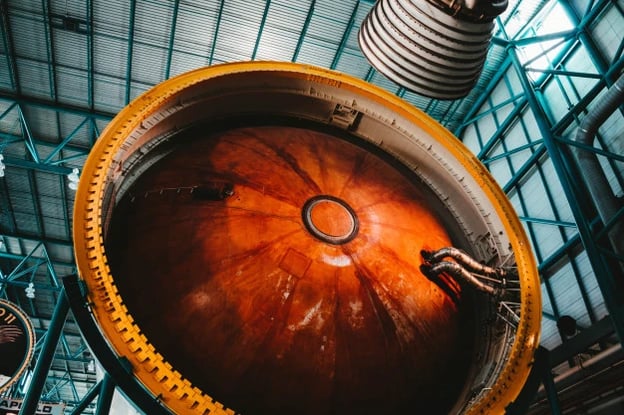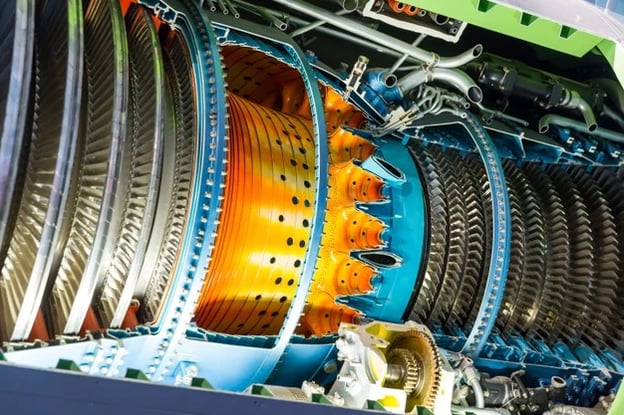
Manufacturing is a challenge in the aerospace industry. Not only are aerospace parts extraordinarily complex, but they also need to be structurally sound and meet the highest quality assurance standards of almost any industry.
To reduce costs and overcome traditional manufacturing challenges, many aerospace companies are turning from conventional manufacturing processes to additive manufacturing to produce the complex parts they need efficiently.
Without question, additive manufacturing is transforming the aerospace industry. Additive manufacturing in the aerospace market is expected to grow at a 22.17% compound annual growth rate (CAGR) and reach $6.75 billion by 2026.

Additive manufacturing is a process in which material is added to the structure of a three-dimensional object one layer at a time, based on printing CAD data (a digital 3D model). It’s also commonly referred to as 3D printing.
This is different from traditional manufacturing processes, also known as subtractive manufacturing. With conventional manufacturing, the material is put into a mold to harden. When the material dries or cools, it’s taken out of the mold and excess material is removed to form the final product - hence the term subtractive.
In the conventional manufacturing process, the following steps occur:
With additive manufacturing, there are fewer manufacturing steps and the process goes as follows:
3D printing in aerospace based on CATIA models is revolutionizing the aerospace manufacturing industry by changing the way parts are made.
Here are six ways that additive manufacturing is used in aerospace applications.
From helicopter parts to turbine engines, aerospace components require highly complex geometric structures in sometimes very tight spaces.
Rather than create small, intricate parts separately and combine them into the whole later, a design engineer can create 3D models of the entire structure using printing CAD data - interior components and all. Then, the 3D printer can create one seamless part that includes all the intricate internal dimensions and complex geometries, with no assembly required. Such a method can be used even for additive manufacturing jet engines for airplanes.
Using additive manufacturing, it’s possible to create intricate parts with less lead time and energy from a wide variety of materials, including metal and carbon fiber.
Without the need to design molds and outsource production, aerospace engineers can design and print prototypes in a fraction of the time that it would take using traditional manufacturing methods. With the ability to create and test prototypes faster, aerospace companies can speed up their time to market and stay ahead of the competition.
In aerospace, it’s very important that a part is produced according to specifications. With conventional manufacturing, the specification process has already been set up. However, the specification process has not been set up with additive manufacturing, so ensuring that a manufactured part has been produced according to specifications is not as clear-cut.
Some current challenges of additive manufacturing in aerospace include the following:

Additive manufacturing can not only reduce the time to create prototypes, but it can also reduce the cost.
With conventional manufacturing, material waste can be as high as 98% for many aerospace applications. You can end up with lots of metal chips after subtraction, and creating the right mold can be a lengthy process.
Since the material is added and not subtracted with additive manufacturing, it can drastically reduce material waste, helping manufacturers save money on production costs. There are initial costs associated with the setup of additive manufacturing processes. However, the cost-savings over the long-term outweigh these preliminary expenses.
Every time smaller parts are combined to make a larger object, it reduces the structural integrity of the whole. With additive manufacturing, design engineers can create entire parts, including hollow centers and interior components, without weak, vulnerable joints.
Additionally, additive manufacturing in aerospace industry can leverage composite materials very well. This is an area where additive manufacturing has a distinct advantage over conventional manufacturing.
With additive manufacturing, when you lay down your slice or layers in the direction that the force is going to come in, it allows your final part to be exceptionally strong in that direction.
Fuel is one of the highest costs in the aerospace industry. The best way to reduce fuel consumption is to create lighter parts. Unfortunately, when using conventional manufacturing, it’s nearly impossible to create lighter parts without sacrificing structural integrity.
Additive manufacturing airplane parts without the need for joining components like bolts and screws, additive manufacturing processes can reduce frame weight by 25%, while increasing structural integrity. Not only does additive manufacturing reduce fuel consumption, but it also increases the aircraft’s overall strength.
The aerospace industry has one of the most notoriously long supply chains of any industry. In order to have parts available, many aerospace companies stockpile large quantities of components in warehouses - another cost and logistical concern.
Because the additive manufacturing process is fast and efficient, aerospace manufacturers can produce components - including custom parts - in-house in a fraction of the time and cost than if they had to order it through the standard supply chain. This reduces the need to have parts on hand or maintain extensive storage facilities.

With the ability to create customized, lightweight, and structurally sound parts quickly and efficiently, it’s no wonder that many businesses are turning to additive manufacturing for aerospace applications.
When it comes to the future of additive manufacturing in aerospace, CAD models play a central role. Considering the available additive manufacturing in aerospace examples and research outlook, it is evident CAD models are currently in use and are valuable to aerospace companies.
As more aerospace companies move from conventional to additive manufacturing processes, there will be a bigger focus over the long-term on having the capabilities to print CAD models.
With over 35 years of 3D modeling expertise across a range of industries, including additive manufacturing in space industry, Spatial has created superior pre-processing CAD data and has the tools to build pre-processing software to print precise, geometrically accurate 3D Printing aerospace CATIA models.
Our experts will assist you with printing aerospace CATParts, so you can enjoy all of the benefits additive manufacturing has to offer. Contact us today and learn how we can help your aerospace business thrive.
These Stories on Additive Manufacturing
ACIS, 3DScript and SAT are registered trademarks of Spatial Corp.
No Comments Yet
Let us know what you think